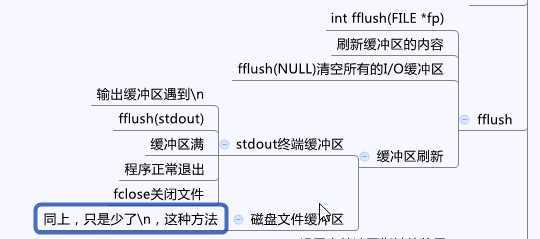标签:style blog http color os io strong ar for
#include <stdio.h>int main(){FILE * fp = fopen("a.txt","w+");if(fp == NULL)return -1;fprintf(fp , "I am a stutent %d\n",100);fclose(fp);return 0;}

#include <stdio.h>int main(){printf("hello");fflush(stdout); //刷新了hello才能输出来,也可以fflush(NULL)while(1){}printf("h");return 0;}

#include <stdio.h>int main(){printf("hello");while(1){}printf("h");return 0;}

在C语言中,常用的文件检测函数有以下几个:
1. 文件结束检测函数feof函数
调用格式:
1 | feof(文件指针); |
功能:判断文件是否处于文件结束位置,如文件结束,则返回值为1,否则为0。
2. 读写文件出错检测函数
ferror函数调用格式:
1 | ferror(文件指针); |
功能:检查文件在用各种输入输出函数进行读写时是否出错。如ferror返回值为0表示未出错,否则表示有错。
3. 文件出错标志和文件结束标志置0函数
clearerr函数调用格式:
1 | clearerr(文件指针); |
功能:本函数用于清除出错标志和文件结束标志,使它们为0值。
8.6 文件IO fflush fseek ftell rewind feof ferror
标签:style blog http color os io strong ar for
原文地址:http://www.cnblogs.com/l6241425/p/3952346.html